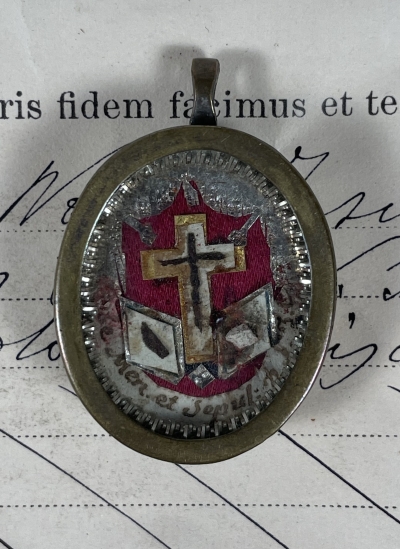The True Cross is the name for physical remnants that, by the Church tradition, are believed to be from the cross upon which Jesus was crucified. Empress Helena, the mother of Constantine, the first Christian Emperor of Rome, traveled to the Holy Land in 326–28, where she discovered the hiding place of three crosses that were believed to be used at the crucifixion of Jesus and of two thieves, St. Dismas and Gestas, executed with him, and a miracle revealed which of the three was the True Cross. Fragments of the Cross were broken up, and the pieces were widely distributed; in 348, in one of his Catecheses, Cyril of Jerusalem remarked that the "whole earth is full of the relics of the Cross of Christ." Most of the very small relics of the True Cross in Europe came from Constantinople after the city was captured and sacked in 1204 during the Fourth Crusade. They were carved up by the present bishops and divided with other very precious relics among the knights, who, after their return to the homeland, donated them to churches and monasteries.
Holy Sepulchre or Jesus's empty tomb is one of the holiest sites in Christianity, where he is said to have been buried and resurrected. The tomb is enclosed by the 18th-century shrine, called the Edicule in The Church of the Holy Sepulchre, located in the Christian Quarter of the Old City of Jerusalem.
One of the significant relics of the wood from the Table used at the Last Supper is housed in the Cathedral of Saint John Lateran. It is located in the chapel at the top of the Holy Stairs called the Sancta Sanctorum, or the Holiest of the Holies and framed high above the tabernacle behind a gold relief of the Last Supper.







 Change language to English
Change language to English